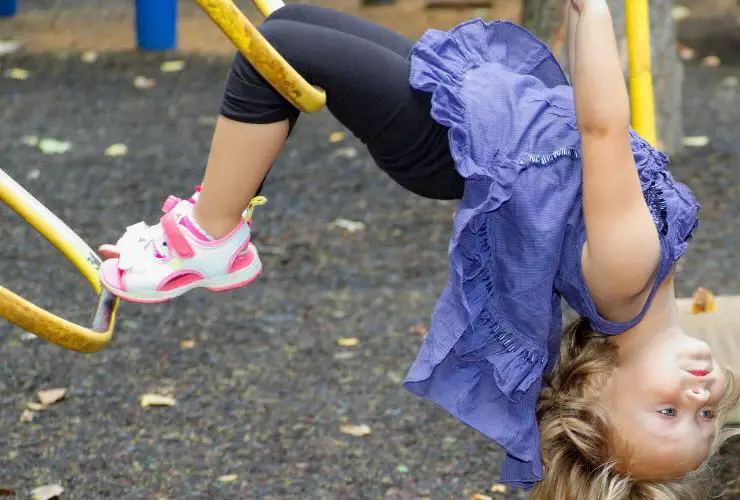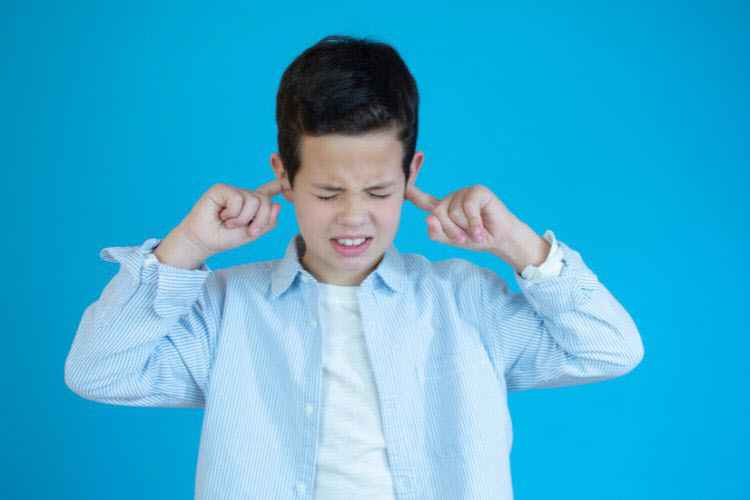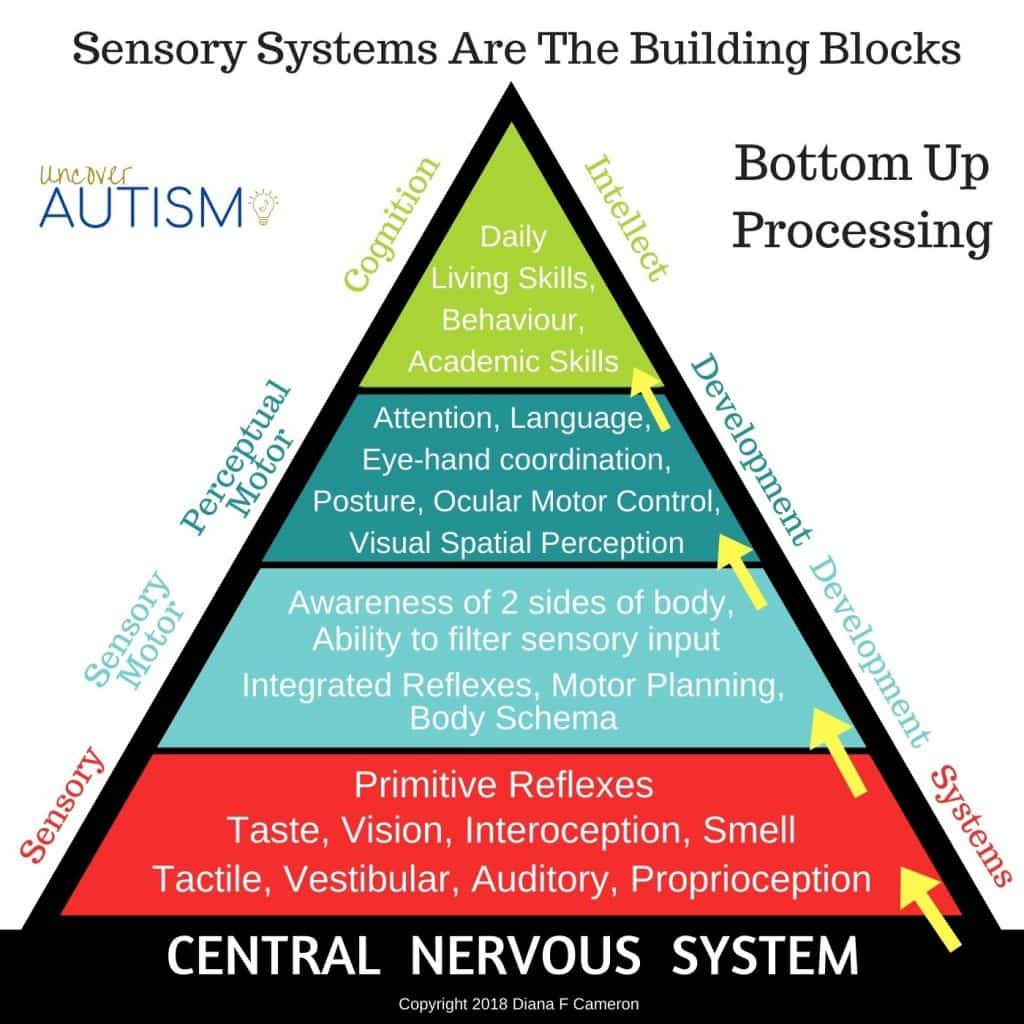Some may see children with autism hanging upside down as a novel sensory seeking behavior. The need to hang upside down stems from the need for additional vestibular and proprioceptive input and the advantages inverting the head provides. While all sensory seeking behaviors are different, unharmful behaviors of this kind of autism stimming provide benefits or calming down the central nervous system.
Children with Autism Hanging Upside Down – Why?
Sensory integration is the brain’s ability to process sensory input. Children are naturally sensory creatures and interpret the world in which they live using all their senses. That is why they need to move to learn, because a multisensory approach is how their brain makes sense of everything coming in.

For children with autism, and other children with sensory needs that may not have autism, if something is impeding the ability to process correctly, we will see either seeking or avoiding behavior as the brain tries to fulfill the need.
To understand why this particular behavior happens, we need to look at how children with ASD may have difficulty with sensory integration.
Reason 1: Craving Sensory Experiences

Just like children who have difficulty, the other extreme is children who crave more sensory input. These types of sensory challenges for those with autism can be described as the children being an exceptionally large cup and the sensory experiences being drops of liquid going into the cup.
The cup is so big that it doesn’t matter how many sensory experiences they have, they never feel like it is enough – the cup never fills.
For children with autism hanging upside down can provide some of this stimulation they are craving.
These kids with autism actively seek out sensory experiences. They might have a strong desire for more sensory input than usual, sometimes to the point of making themselves sick (like excessive spinning).
- Constantly Moving: Some kids seek out movement, like spinning around or rocking back and forth.
- Exploring by Touch: They might touch everything they come across or put objects in their mouths more often.
The Senses and ASD
Sensory integration is imperative to the brain’s ability to correctly process information coming in. Unfortunately, almost always, children with autism have some sort of sensory processing challenge. These can be seen in different forms. Let’s break it down into simple terms.
One study has even found that early disruptions in movement protocols in babies can sometimes be an indication of autism before an official diagnosis can be given. While all children who may struggle with the progression of movement in neurotypical ways (such as rolling, sitting, crawling etc) may not have autism, in hindsight these challenges are extremely common in children later diagnosed with autism.
Some research suggests that inverted positioning might offer advantages such as improved sensory integration, reduced anxiety, heightened body awareness, and potentially a means of modulating sensory sensitivities.
Sensitivity To Sensory Input
Some kids with autism might be extra sensitive to sensory information. Everyday sights, sounds, or textures that others don’t even notice can feel overwhelming to them.
Sensitivity to Sound
This could be something like a vacuum cleaner, a rooster crowing or another specific sound. It could be the volume of sound which may present in them putting their hands over their ears or saying “what” a lot as if they are hard of hearing. Both extremes are due to auditory processing challenges which, in my 35+ years’ experience, all children with autism have.

It is important to get an audiogram to rule out the possibility of hearing loss, but if that comes back clear, everything else is attributed to challenges in the brain’s ability to process the sounds correctly.
Discomfort With Touch
These children may not like to be held or like certain material on their skin (like wool or may find other things scratchy). These things may not appear scratchy or uncomfortable to you, but it is not the skin’s inability to tolerate the fabric but the brain’s interpretation of what that fabric feels like on the skin.
Sensitivity to Light
Children may put their hands over their eyes in lights or complain that the lights are too bright even when they aren’t.
No matter the source of the input they struggle with, sometimes even the smallest amount can set them off, making their bodies feel uncomfortable and stressed.
Reason 2: Sensory Favorites and Repetitive Behaviors
Your child with autism hanging upside down constantly could be because it is a form of autism stimming, a repetitive behavior that brings them comfort. A repetitive or fixated behavior is anything a child with ASD does over and over and will become distressed if you try and stop them.
In the case of self-injurious behaviors (like banging their head against the floor or a wall) need to be stopped and intervention and redirection needs to occur, but with others, they are harmless and provide a sense of comfort and calm.
It may be difficult for you to understand how a child with autism hanging upside down gets any benefit but understanding more about what is happening in their physical body might help to explain.
Children with autism can become fixated on certain sensory experiences, which can impact their behavior and interests. For example:
- Repeating Actions: Repetitive actions might include flapping their hands, clicking their fingers back or forth or hanging upside down on anything and everything.
- Intense Focus: Some kids can become hyper-focused on specific things they like a particular visual pattern, a person or a specific movement (like watching balls spin and then spinning themselves).
Reason 3: More Vestibular Input Needed
The vestibular system is like the commander and chief in relation to sensory input. It, along with the proprioceptive sense, process and pass along lots of information and is tightly integrated with other sensory systems such as touch, vision and hearing.
If we look at the pyramid of learning, we see why the senses build the foundation of everything. When there are challenges in this area, it affects high cortical learning down the track such as reading and comprehension etc.

As said before, the vestibular system is commander and chief of all sensory input and when that isn’t working correctly, children end up with sensory issues. This could manifest in many ways from difficulty in learning, sensory sensitivities, being agitated and anxious or poor motor skills and balance just to name a few.
It is extremely common that sensory processing disorder (or a compromised ability to process sensory input) is a comorbid condition in children with autism. It creates all sorts of issues, but understanding what is happening (or not happening) in the brain can help you know how to approach things differently to allow them to be more comfortable.
Proprioception works closely with the vestibular system and is knowing where we are from the inside out. For example, it you close your eyes and put your arm in the air above your head, and then move it to the side, you don’t have to look at it, to know where it is in the new position.
It is the body’s innate ability to sense the position, movement, and orientation of our own body parts by the brain interpreting information from muscles, tendons, joints and the amount of pressure it feels. It is a vital component of our overall sensory perception and contributes significantly to our sense of body awareness and coordination. Proprioception allows us to perform precise motor tasks and interact with our environment effectively.
If the vestibular system is not working effectively, or the brain is misinterpreting information passed on by the vestibular and proprioception senses, you may well find your child with autism hanging upside down as one solution.
Because the vestibular system is found in the head connected to the cochlea, hanging upside down and inverting the head stimulates this system aggressively, giving the child much more input than standing upright. This can satisfy the need to feel more input so they keep doing it.
By understanding and addressing these sensory challenges, parents and caregivers can create environments that give kids with autism what they need, helping them navigate the world more comfortably and confidently. If it doesn’t appear to be hurting your child, then find appropriate ways to support your child with autism hanging upside down that are safe but still giving them the added stimulation they crave.
Researchers specializing in Autism Spectrum Disorder have investigated the potential benefits of novel sensory interventions, such as hanging upside down, for children with ASD. We look into why this means of seeking sensory input brings the stimulation children with autism may be looking for.
